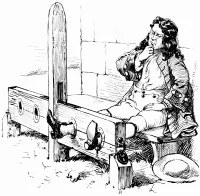Fannie Mae (FNMA), a U.S. government-sponsored enterprise, was established in 1938 to bolster the secondary mortgage market. It securitizes mortgage loans into mortgage-backed securities (MBS), enabling lenders to reinvest in further lending. This process expands the number of lenders and reduces reliance on local savings and loan associations. Fannie Mae's operations complement those of Freddie Mac (FHLMC) in the housing finance system.
1933: Mortgage Debt Crisis
By 1933, during the Great Depression, an estimated 20 to 25% of the nation's outstanding mortgage debt was in default, resulting in foreclosures where nearly 25% of America's homeowners lost their homes to banks.
1938: Fannie Mae Established
In 1938, Fannie Mae was established by the U.S. Congress as part of Franklin Delano Roosevelt's New Deal to provide local banks with federal money to finance home loans. It created a liquid secondary mortgage market, enabling banks to issue more housing loans, primarily by buying Federal Housing Administration (FHA) insured mortgages.
1950: Fannie Mae Acquired by Housing and Home Finance Agency
In 1950, Fannie Mae was acquired by the Housing and Home Finance Agency from the Federal Loan Agency as a constituent unit.
1954: Fannie Mae Becomes Mixed-Ownership Corporation
In 1954, an amendment known as the Federal National Mortgage Association Charter Act transformed Fannie Mae into a "mixed-ownership corporation", with the federal government holding preferred stock and private investors holding common stock.
1968: Fannie Mae Converts to Privately Held Corporation
In 1968, Fannie Mae converted to a privately held corporation, removing its activity and debt from the federal budget, due to the Housing and Urban Development Act of 1968. Fannie Mae's predecessor was split into the current Fannie Mae and the Government National Mortgage Association ("Ginnie Mae").
1968: Ginnie Mae Guarantees First Mortgage Pass-Through Security
In 1968, Ginnie Mae guaranteed the first mortgage pass-through security of an approved lender.
1968: Ginnie Mae Split Off from Fannie Mae
In 1968, Ginnie Mae was split off from Fannie Mae. Ginnie retained the explicit guarantee, while Fannie became a private corporation, chartered by Congress with a direct line of credit to the US Treasury.
1968: Fannie Mae becomes a publicly traded company
In 1968, the Federal National Mortgage Association (Fannie Mae) became a publicly traded company. Its brother organization is the Federal Home Loan Mortgage Corporation (FHLMC), better known as Freddie Mac.
1970: Fannie Mae Authorized to Purchase Conventional Loans
In 1970, the federal government authorized Fannie Mae to purchase conventional loans and created the Federal Home Loan Mortgage Corporation (FHLMC), known as Freddie Mac, to compete with Fannie Mae and facilitate a more robust secondary mortgage market. That same year FNMA went public on New York and Pacific Exchanges.
1971: Freddie Mac Issues First Mortgage Pass-Through
In 1971, Freddie Mac issued its first mortgage pass-through, called a participation certificate, composed primarily of private mortgage loans.
1977: Community Reinvestment Act (CRA) Enacted
The Community Reinvestment Act (CRA) was enacted in 1977.
1981: Fannie Mae Issues First Mortgage-Backed Security
In 1981, Fannie Mae issued its first mortgage pass-through and called it a mortgage-backed security.
1992: Housing and Community Development Act of 1992
In 1992, President George H. W. Bush signed the Housing and Community Development Act of 1992, amending the charter of Fannie Mae and Freddie Mac to include an affirmative obligation to facilitate the financing of affordable housing for low- and moderate-income families. The GSEs were required to meet "affordable housing goals" set annually by the Department of Housing and Urban Development (HUD).
1996: Congressional Budget Office on GSE Benefits
In 1996, the Congressional Budget Office wrote that government-sponsored enterprises are costly to the government and taxpayers and that the benefit is currently worth $6.5 billion annually.
1998: Bonus payments from 1998-2004
On December 18, 2006, U.S. regulators sought to recoup bonus payments collectively accrued by Franklin Raines, J. Timothy Howard, and Leanne G. Spencer from 1998 to 2004.
1999: Fannie Mae Under Pressure to Expand Mortgage Loans
In 1999, Fannie Mae came under pressure from the Clinton administration to expand mortgage loans to low and moderate income borrowers by increasing the ratios of their loan portfolios in distressed inner city areas designated in the Community Reinvestment Act (CRA) of 1977.
1999: Concerns Raised About Fannie Mae's Risk
In 1999, The New York Times reported that Fannie Mae's move towards the subprime market was taking on significantly more risk, potentially leading to a government rescue similar to the savings and loan industry in the 1980s during an economic downturn.
June 15, 2000: House Banking Subcommittee Hearings on Fannie Mae
On June 15, 2000, the House Banking Subcommittee On Capital Markets, Securities And Government-Sponsored Enterprises held hearings on Fannie Mae.
2000: Anti-Predatory Lending Rules Implemented
In 2000, HUD implemented anti-predatory lending rules that disallowed risky, high-cost loans from being credited toward affordable housing goals.
2001: Start of Refinancing Boom
In 2001, there was the start of an unprecedented refinancing boom due to historically low interest rates.
September 2003: Duration gap between plus to minus one month
From September 2003 to March, Fannie Mae's duration gap has run between plus to minus one month.
2003: Concerns Raised About Fannie Mae's Risk
In 2003, Alex Berenson of The New York Times reported that Fannie Mae's risk was much larger than commonly believed. Nassim Taleb wrote in The Black Swan that Fannie Mae seemed to be sitting on a barrel of dynamite.
2003: Financial Institutions Maintain Elevated Earnings Levels
In 2003, financial institutions sought to maintain earnings levels elevated by the refinancing boom. This led to lower underwriting standards and new products that the GSEs would not initially securitize.
2003: Subprime Mortgage Crisis Begins
In 2003, the subprime mortgage crisis began.
September 20, 2004: Report alleging accounting errors
On September 20, 2004, the Office of Federal Housing Enterprise Oversight released a report alleging widespread accounting errors at Fannie Mae, which was under investigation for its accounting practices.
2004: Introduction of Custom DU
In 2004 Fannie Mae followed up with Custom DU, which allows lenders to set custom underwriting rules to handle nonconforming loans as well.
2004: High-Risk Loans Again Counted Toward Affordable Housing Goals
In 2004, the anti-predatory lending rules were dropped, and high-risk loans were again counted toward affordable housing goals.
2004: Shift Towards Private-Label Securitization
In 2004, the market shifted away from regulated GSEs and toward Mortgage Backed Securities (MBS) issued by unregulated private-label securitization (PLS) conduits.
2004: Alan Greenspan's Testimony on Fannie Mae's Financial Position
In testimony before the House and Senate Banking Committee in 2004, Alan Greenspan expressed the belief that Fannie Mae's (weak) financial position was the result of markets believing that the U.S. Government would never allow Fannie Mae (or Freddie Mac) to fail.
2004: Bonus payments from 1998-2004
On December 18, 2006, U.S. regulators sought to recoup bonus payments collectively accrued by Franklin Raines, J. Timothy Howard, and Leanne G. Spencer from 1998 to 2004.
January 26, 2005: Federal Housing Enterprise Regulatory Reform Act of 2005 Introduced
On January 26, 2005, the Federal Housing Enterprise Regulatory Reform Act of 2005 (S.190) was first introduced by U.S. Senator Chuck Hagel to reform the GSE regulatory structure due to accounting problems and questionable management actions leading to income restatements by the GSEs.
July 2005: House Financial Services Committee Report on Reform Act
In July 2005, the House Financial Services Committee crafted changes and produced a committee report for the Federal Housing Finance Reform Act of 2005 (H.R. 1461).
July 2005: Federal Housing Enterprise Regulatory Reform Act Reported Favorably
In July 2005, the Senate's Committee on Banking, Housing, and Urban Affairs reported the Federal Housing Enterprise Regulatory Reform Act favorably, but it was never considered by the full Senate for a vote.
2005: Fannie Mae Expresses Concerns About Layered-Risk Lending
In early 2005, Fannie Mae began expressing concerns about "layered-risk" lending, where borrowers were offered loans with teaser rates, interest-only, negative amortization, payment options, and low-documentation requirements on top of floating-rate loans. They ceded market share to competitors offering riskier products.
December 18, 2006: U.S. regulators filed civil charges
On December 18, 2006, U.S. regulators filed 101 civil charges against chief executive Franklin Raines; chief financial officer J. Timothy Howard; and the former controller Leanne G. Spencer.
2006: Fannie Mae Purchases Subprime and Alt-A Loans
In 2006, Fannie Mae purchased subprime and Alt-A loans as investments.
2006: Costs to complete internal audit
In 2006, Fannie Mae was expected to spend more than $1 billion to complete its internal audit and bring it closer to compliance.
2006: McCain Cosponsors Regulatory Reform Act
In 2006, Sen. John McCain cosponsored S.190, pointing out that Fannie Mae's regulator reported that profits were "illusions deliberately and systematically created by the company's senior management."
2006: Oversupply of Underpriced Housing Finance
In 2006, the growth of private-label securitization and lack of regulation led to an oversupply of underpriced housing finance, causing an increase in borrowers unable to pay their mortgages, particularly adjustable rate mortgage loans (ARM). This led to a rise in home foreclosures and a decline in home prices.
2007: Affordable Housing Goal Percentage
By 2007, the annual goal for low-income and moderate-income mortgage purchases for each GSE was 55% of the total number of dwelling units financed by mortgage purchases.
2007: Fannie Mae CEO Testifies on Underwriting Standards
In 2007, Daniel Mudd, then president and CEO of Fannie Mae, testified that the agency's underwriting requirements drove business into the private mortgage industry, which marketed aggressive products without regard to future consequences, instead of providing a safe and stable means of lending to buyers who did not have prime credit.
2007: Fannie Mae Purchases Subprime and Alt-A Loans
In 2007, Fannie Mae purchased subprime and Alt-A loans as investments.
June 2008: CEOs received loans below market rate
In June 2008, The Wall Street Journal reported that two former CEOs of Fannie Mae, James A. Johnson and Franklin Raines, had received loans below market rate from Countrywide Financial.
July 11, 2008: U.S. Government Considers Taking Over Fannie Mae and Freddie Mac
On July 11, 2008, The New York Times reported that U.S. government officials were considering a plan for the U.S. government to take over Fannie Mae and/or Freddie Mac should their financial situations worsen due to the U.S. housing crisis. Government officials also considered an explicit government guarantee of $5 trillion on debt owned or guaranteed by the two companies.
July 2008: Government attempts to ease market fears
In July 2008, the U.S. government attempted to ease market fears by reiterating that Fannie Mae and Freddie Mac played a central role in the U.S. housing finance system. The Treasury Department and the Federal Reserve took steps to bolster confidence, including granting both corporations access to Federal Reserve low-interest loans and removing the prohibition on the Treasury Department to purchase the GSEs' stock.
July 30, 2008: Law Enables Expanded Regulatory Authority Over Fannie Mae and Freddie Mac
On July 30, 2008, a law enabling expanded regulatory authority over Fannie Mae and Freddie Mac increased the national debt ceiling by US$800 billion to US$10.7 trillion, in anticipation of the potential need for the Treasury to support the federal home loan banks.
August 2008: Fannie Mae's Mortgage Portfolio Exceeds $700 Billion
By August 2008, Fannie Mae's mortgage portfolio was in excess of $700 billion.
August 2008: Fannie Mae and Freddie Mac Shares Tumble
By August 2008, shares of both Fannie Mae and Freddie Mac had tumbled more than 90% from their one-year prior levels, despite government efforts to support the corporations. Also by August 2008, Fannie Mae's mortgage portfolio exceeded $700 billion.
September 7, 2008: Fannie Mae and Freddie Mac Placed into Conservatorship
On September 7, 2008, Fannie Mae and Freddie Mac were placed into conservatorship of the FHFA by James Lockhart. The firms' CEOs and boards of directors were dismissed, and the Treasury received new senior preferred stock and common stock warrants amounting to 79.9% of each GSE. Dividends on previously outstanding stock were suspended.
2008: Financial crisis
Bank of America acquired Countrywide and Merrill Lynch during the 2008 financial crisis.
2008: Government Takeover due to Mortgage-Backed Securities Losses
During the boom, Fannie and Freddie invested billions of dollars in mortgage-backed securities issued by such companies as Nomura. Those investments bolstered profits but, in the bust, contributed to steep losses that ultimately resulted in the companies' 2008 government takeover.
2008: Fannie Stock Plunges Amid Financial Crisis Fears
In 2008, Fannie stock plunged, raising concerns about capital and potential bankruptcy or government seizure. U.S. Treasury Secretary Henry M. Paulson and the White House defended Fannie Mae's financial soundness to prevent a total financial panic. Fannie and Freddie underpinned the whole U.S. mortgage market.
2008: Financial Crisis Due to Underwriting Standards Decline
In 2008, a decline in underwriting standards, caused by competition between the GSEs and private securitizers, contributed to the financial crisis.
2008: Pricing of Non-Conforming Loans
In 2008, since the demand for bonds not guaranteed by GSEs was almost non-existent, non-conforming loans were priced nearly 1% to 1.5% higher than conforming loans.
2008: Inclusion of Jumbo Loans in TBA-Eligible Mortgage-Backed Securities
In early 2008, the decision was made to allow TBA (To-be-announced)-eligible mortgage-backed securities to include up to 10% "jumbo" loans.
2009: Employee voiced suspicions
An employee claims that she started voicing her suspicions in 2009 to Fannie Mae management about kickbacks.
June 16, 2010: Fannie Mae and Freddie Mac Stocks Delisted from NYSE
On June 16, 2010, Fannie Mae and Freddie Mac announced their stocks would be delisted from the NYSE. The Federal Housing Finance Agency directed the delisting after Fannie's stock traded below $1 a share for over 30 days. Since then the stocks have continued to trade on the Over-the-Counter Bulletin Board.
February 2011: CFO Piszel resigned from CoreLogic
In February 2011, Anthony "Buddy" Piszel, who was CFO of CoreLogic, "had received a notice from the SEC that the agency was considering taking action against him", and then he resigned from CoreLogic.
December 2011: Executives charged with securities fraud
In December 2011, six Fannie Mae and Freddie Mac executives, including Daniel Mudd, were charged by the U.S. Securities and Exchange Commission with securities fraud.
2011: FHFA lawsuits
In 2011, JPMorgan Chase was one of 18 financial institutions the FHFA sued back in 2011, accusing them of selling to Fannie and Freddie securities that "had different and more risky characteristics than the descriptions contained in the marketing and sales materials".
2011: FHFA Targets Financial Institutions for Mortgage-Related Infractions
In 2011, the FHFA targeted 18 financial institutions, including Bank of America Corp. and Goldman Sachs Group Inc., alleging that the companies lied about the quality of the loans underlying the securities.
2012: Summary judgment issued
In 2012, a summary judgment was issued clearing Franklin Raines, J. Timothy Howard, and Leanne G. Spencer, indicating the government had insufficient evidence that would enable any jury to find the defendants guilty.
May 8, 2013: Budget and Accounting Transparency Act of 2014 introduced
On May 8, 2013, Representative Scott Garrett introduced the Budget and Accounting Transparency Act of 2014 (H.R. 1872; 113th Congress) into the United States House of Representatives during the 113th United States Congress.
May 2013: Fannie Mae Announces Dividend Payment to U.S. Treasury
In May 2013, Fannie Mae announced that it is going to pay a dividend of $59.4 billion to the United States Treasury.
May 29, 2013: Former specialist pleaded not guilty
On May 29, 2013, the Los Angeles Times reported that a former foreclosure specialist at Fannie Mae pleaded "not guilty" to accepting a kickback from an Arizona real estate broker in a Santa Ana Federal court.
2014: Budget and Accounting Transparency Act of 2014
On May 8, 2013, Representative Scott Garrett introduced the Budget and Accounting Transparency Act of 2014 (H.R. 1872; 113th Congress) into the United States House of Representatives during the 113th United States Congress.
December 31, 2014: Fannie Mae's Dividend Payment to Treasury
Fannie Mae's 2014 financial results enabled it to pay $20.6 billion in dividends to Treasury for the year, resulting in a cumulative total of $134.5 billion in dividends through December 31, 2014 – approximately $18 billion more than Fannie Mae received in support.
March 31, 2015: Fannie Mae's Expected Payments to the Treasury
As of March 31, 2015, Fannie Mae expects to have paid a total of $136.4 billion in payments to the Treasury.
May 11, 2015: Judge Rules Nomura Holdings Inc. Was Not Truthful in Mortgage-Backed Securities
On May 11, 2015, a U.S. District Court judge ruled that Nomura Holdings Inc. was not truthful in describing mortgage-backed securities sold to Fannie Mae and Freddie Mac, giving a victory to the companies' conservator, the Federal Housing Finance Agency (FHFA). The judge asked the FHFA to propose updated damages to be paid by Nomura and co-defendant RBS Securities Inc.
2024: Mortgage Market Size Comparison
As recently as 2008, Fannie Mae and the Federal Home Loan Mortgage Corporation (Freddie Mac) had owned or guaranteed about half of the U.S.'s $12 trillion mortgage market (equivalent to $17,110,000,000,000 in 2024).
2024: Fannie Mae's Mortgage Portfolio Value
By August 2008, Fannie Mae's mortgage portfolio was in excess of $700 billion (equivalent to $998,400,000,000 in 2024).
2024: Equivalent spending in 2024
In 2006, Fannie Mae was expected to spend more than $1 billion, equivalent to $1,493,000,000 in 2024, to complete its internal audit and bring it closer to compliance.
2024: Fannie Mae's Asset Size and Rankings
In 2024, Fannie Mae has over $4.3 trillion in assets, making it the largest company in the United States and the fifth largest company globally by assets. It was ranked 27th on the Fortune 500 for U.S. corporations by total revenue and 58th on the Fortune Global 500 for global corporations by total revenue. In terms of profit, Fannie Mae is the 15th most profitable company in the United States and the 33rd most profitable in the world.
2024: Fannie Mae Dividend Payment to U.S. Treasury
In May 2013, Fannie Mae announced that it is going to pay a dividend of $59.4 billion (equivalent to $78,650,000,000 in 2024) to the United States Treasury.
2024: National Debt Ceiling Increase
The July 30, 2008 law enabling expanded regulatory authority over Fannie Mae and Freddie Mac increased the national debt ceiling by US$800 billion (equivalent to $1,141,000,000,000 in 2024).
October 2025: Fannie Mae Executives Fired After Questioning Data Release
In October 2025, top Fannie Mae executives were fired after internally questioning the release by marketing head Lauren Smith of confidential mortgage pricing data to Freddie Mac. The senior Fannie Mae officials who called her conduct into question were forced out of their jobs.
Mentioned in this timeline

Bank of America is a multinational investment bank and financial...
The United States of America is a federal republic located...

JPMorgan Chase Co incorporated in Delaware and headquartered in New...

Los Angeles is the most populous city in California and...
Arizona is a landlocked state in the Southwestern U S...

Stocks were a type of restraining device historically used as...
Trending

11 days ago Dick Vitale and Charles Barkley Team Up for College Basketball Broadcasts This Season

1 month ago Kim Kardashian's 'All's Fair' TV show faces criticism despite Niecy Nash's defense.
10 days ago Marcus Freeman: Notre Dame coach considered for Giants head coaching vacancy in NFL.
Jeremiyah Love is an American college football running back He currently plays for the Notre Dame Fighting Irish He is...

7 months ago Trump's Tariffs Threaten Cannes 2025, SAG-AFTRA Responds, Impacting Spike Lee's Industry.

7 months ago Mitchell Robinson's Playoff Impact: Knicks' Gamble Pays Off as Hart Shines in Game 3
Popular

Candace Owens is an American conservative political commentator and author...

Ilhan Omar is an American politician currently serving as the...

XXXTentacion born Jahseh Dwayne Ricardo Onfroy was a controversial yet...

Tom Cotton is an American politician and Army veteran currently...
The Kennedy Center Honors are annual awards recognizing individuals and...
Matt and Ross Duffer known as the Duffer Brothers are...